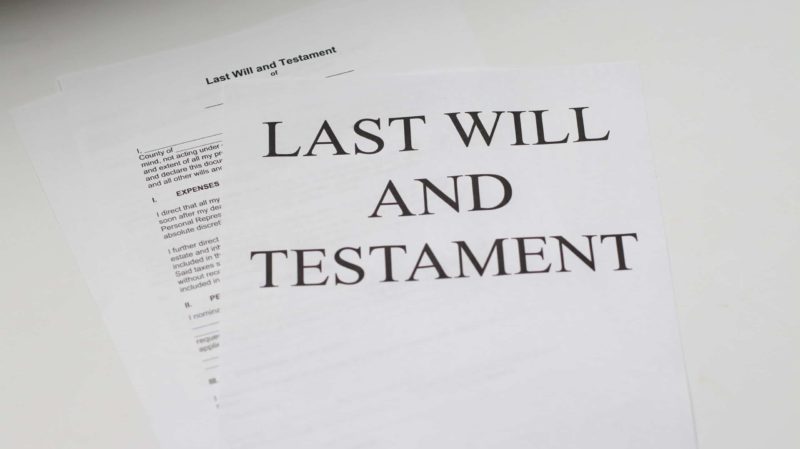Estate freezing and reduction strategies have been an increasingly relevant topic for high-net worth families as the countdown continues towards the sunset of the $13.61MM (double for married couples) estate tax exemption at the end of 2025. You might recall that the estate tax is a flat 40% imposed on any amount over the lifetime exemption. Did you know that the generation skipping transfer tax (“GSTT”) levies another 40% tax, separate from and in addition to the estate tax? Even the most effective wealth transfer strategy designed to protect assets from estate taxation can be derailed if GSTT is left unaddressed – but much like the estate tax, the generation skipping transfer tax can be eliminated with the right plan in place.
What is the Generation Skipping Transfer Tax?
As the name implies, GSTT was put in place to prevent families from dodging the estate tax by making gifts directly to their grandchildren or other descendants. Skipping the second generation would, in a perfect world, prevent an inheritance from being subject to estate taxation twice. GSTT was implemented to close this would-be loophole by acting as a backup to the estate tax. The GSTT is a flat tax equal to the maximum estate and gift tax rate of 40%. Consider GSTT as a separate tax system from the estate and gift tax, carrying its own separate exemption. The GSTT exemption is equal to the estate tax exemption of $13.61MM – and like its estate tax counterpart, the GST tax exemption is scheduled to reduce by half at the end of 2025.
Consider a scenario where you’ve created a trust for the benefit of your descendants. When the trust was funded, you did not allocate your GSTT exemption and named your grandchildren as permissible beneficiaries. The trustee authorizes a distribution to your granddaughter to pay for college – and since GSTT exemption wasn’t allocated, that distribution is considered a taxable distribution to your granddaughter at a rate of 40%.
The bad news is that the GSTT doesn’t stop at your grandchildren. GSTT enters the equation when a transfer is made to someone defined in the tax code as a skip person. A skip person is anyone two or more generations below the transferor, most commonly a grandchild or great-grandchild, but it is not limited to family. A friend can also be a skip person if they are more than 37 ½ years younger than the transferor. A trust can even be treated as a skip person in specific circumstances, such as all beneficial interests being held by skip persons.
The good news is that the IRS has issued guidance that there will be no claw back of GST exemption for gifts made between 2018 and the 2025 sunset, which creates a unique opportunity to ensure this temporarily high exemption is properly utilized.
Anticipating the 2025 Sunset
Allocating your available exemption can protect certain transfers to your heirs from GSTT. There are various ways to utilize your exemption either during life or at death.
Allocation to a Trust
If GST exemption is allocated to a transfer to a trust, that exemption will shield not only the assets initially transferred, but also the future growth of those assets from GSTT.
Recall the example discussed above where a trust distribution to your granddaughter for college tuition is subject to 40% GSTT. In the same scenario, had you contributed $1 MM to the trust and allocated $1 MM of GST exemption, there would be no GSTT consequence to the amount distributed to your granddaughter. Further assume that the $1 MM you transferred to the trust grows to $10 MM. The trustee later makes a $5m distribution to your granddaughter to start a business. Because you allocated GST to the original transfer, the $5 MM distributed to your granddaughter does not trigger the taxable event that it otherwise would. The trust achieved $9 MM of GSTT-exempt growth for only $1 MM of exemption.
Correctly applying GSTT exemption to transfers to a trust can be both effective and complex. While there are automatic transfer rules that apply at death to act as a safeguard against unused exemption, those rules should not be relied upon alone to. Among many other caveats, one aspect that should be considered is the trust’s inclusion ratio which dictates how much of a trust can be subject to GSTT. Generally, it is desirable to have an inclusion ratio of either 0, meaning the trust is entirely exempt from GSTT, or 1, meaning the entire trust is subject to GSTT. It is critical to consult with a tax professional in conjunction with your estate attorney before any transfers are made to ensure the exemption is being correctly applied and confirm that any GSTT-exempt status of the trust is not inadvertently compromised.
Reverse QTIP Election
Another way to apply GST is through a reverse QTIP (qualified terminable interest property) election. A notable trait of the GSTT exemption is that any portion left unused by a decedent does not pass to their surviving spouse, which the reverse QTIP helps remedy. A traditional QTIP election allows a decedent to leave assets to their spouse in trust under the unlimited marital deduction while controlling the final distribution of assets at the surviving spouse’s death. Since a normal QTIP election causes assets to be includable in the estate of the surviving spouse, the survivor is effectively the decedent for estate tax purposes. A surviving spouse could use their own GSTT exemption, but any GSTT exemption applied to the trust by the first decedent would be wasted because the survivor is now considered the transferor of assets. This is where the reverse QTIP election comes into play. This strategy would treat the surviving spouse as the original transferor for GSTT purposes, thereby allowing them to use their own GSTT exemption while keeping any exemption applied to the trust by the first spouse intact. Consultation with an estate tax professional is essential to property utilize this advanced strategy.
Take Action
The generation skipping transfer tax can apply across many circumstances beyond those discussed above. While GSTT is relatively straightforward, it quickly becomes complicated when unraveling the many ways the exemption can be used to curtail it. It is important to consult with an attorney and tax professional early in the estate planning process to discuss the various ways this tax could apply to you. Don’t allow this easily-overlooked tax to derail your wealth transfer plan.
Waldron Private Wealth (“Company”) is an SEC registered investment adviser with its principal place of business in the Commonwealth of Pennsylvania. Company may only transact business in those states in which it is registered, or qualifies for an exemption or exclusion from registration requirements. For information about the Firm’s registration status and business operations, please consult Waldron’s Form ADV disclosure documents, the most recent versions of which are available on the SEC’s Investment Adviser Public Disclosure website at www.adviserinfo.sec.gov.
This material is for informational purposes only and is not intended to be an offer, recommendation or solicitation to purchase or sell any security or product or to employ a specific investment strategy. Due to various factors, including changing market conditions, aforementioned information may no longer be reflective of current position(s) and/or recommendation(s). Moreover, no client or prospective client should assume that any such discussion serves as the receipt of, or a substitute for, personalized advice from Company, or from any other investment professional. Investing involves risk, including the potential loss of money invested. Past performance does not guarantee future results. Asset allocation and diversification do not guarantee a profit or protect against loss. Company is neither an attorney nor an accountant, and no portion of the web site content should be interpreted as legal, accounting or tax advice.








